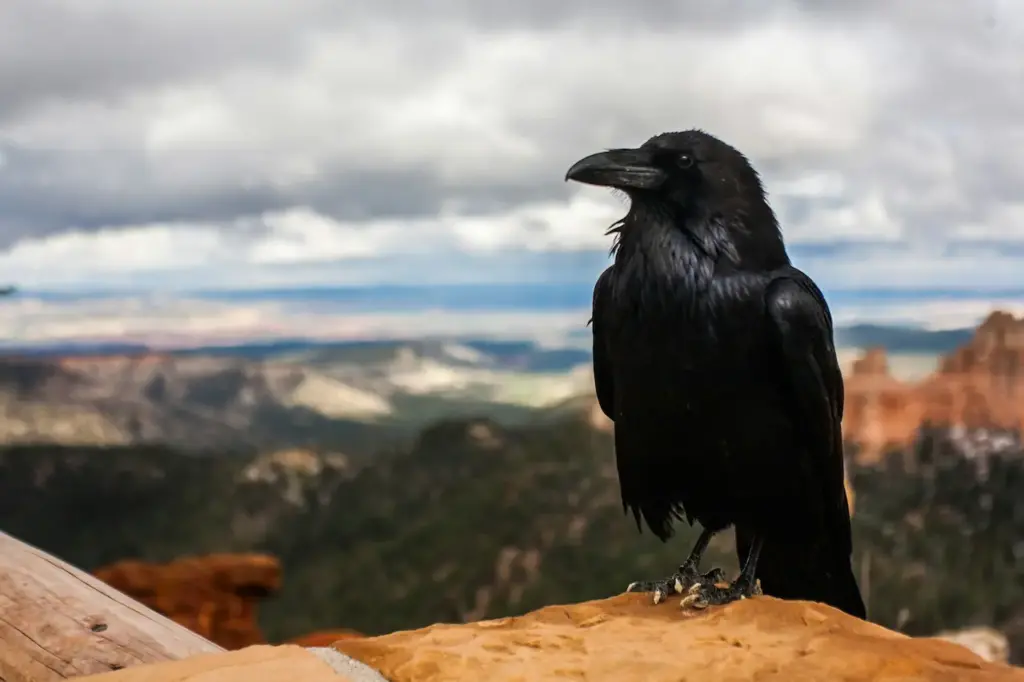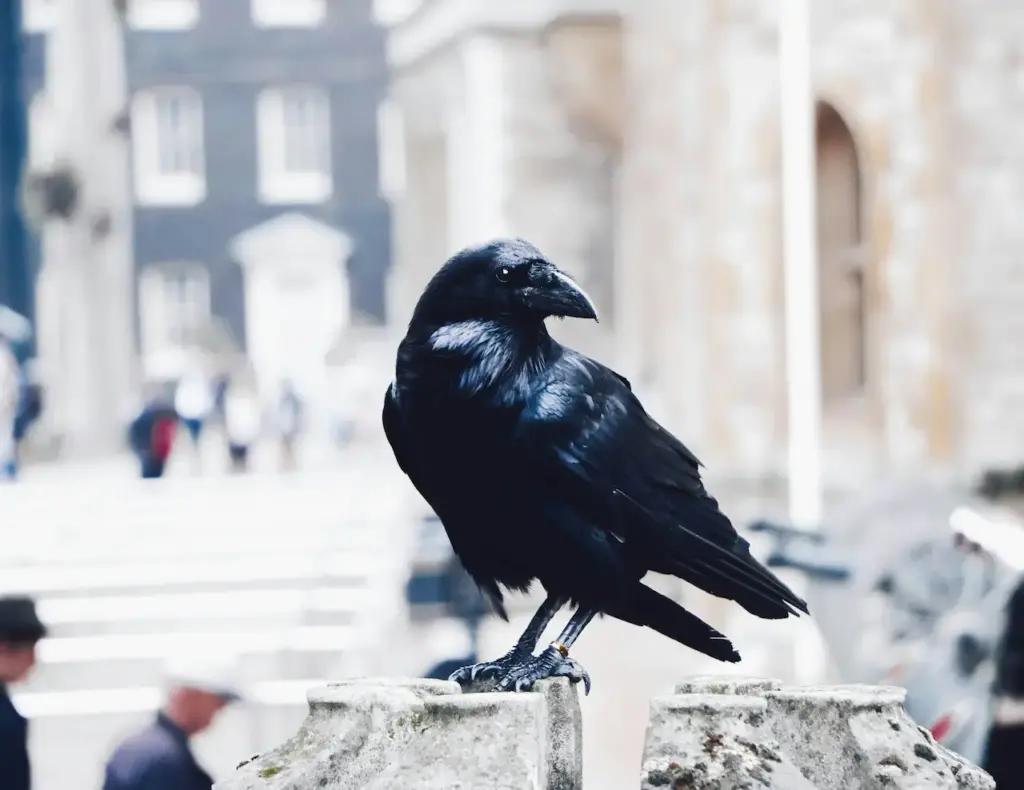What Eats A Crow?
Categories
- Accipitridae (1)
- Acrididae (1)
- Algae (2)
- Alligatoridae (1)
- Amoebidae (1)
- Amphibians (3)
- Anatidae (1)
- Anguillidae (1)
- Arachnids (2)
- Bears (2)
- Big Cats (3)
- Birds (13)
- Bovidae (5)
- Bufonidae (1)
- Camelids (1)
- Cameras (1)
- Canines (13)
- Caridea (1)
- Carnivora (10)
- Castoridae (1)
- Cats (5)
- Cebidae (1)
- Cephalopod (1)
- Cervidae (2)
- Cetacean (1)
- Chondrichthyes (1)
- Crocodilia (2)
- Crustaceans (4)
- Culicidae (1)
- Cyaneidae (1)
- Dasypodidae (1)
- Dasyurids (1)
- Deer (1)
- Delphinidae (1)
- Desktop (1)
- Didelphidae (1)
- Dinosaurs (1)
- Dogs (13)
- Dolphins (2)
- Echinoderms (1)
- Education (10)
- Elephantidae (1)
- Equine (1)
- Erethizontidae (1)
- Erinaceidae (1)
- Farming (1)
- Felidae (5)
- Fish (5)
- Food Chain (31)
- Food Web (2)
- Formicidae (1)
- Frugivore (1)
- Gaming (1)
- Gastropods (1)
- Giraffids (1)
- Great Apes (2)
- Health Conditions (3)
- Herbivore (4)
- Hi-Fi (1)
- Hippopotamidae (1)
- Hominidae (1)
- Insects (10)
- Invertebrates (2)
- Keyboards (1)
- Laptops (1)
- Leporidae (1)
- Mammals (23)
- Marsupials (4)
- Mephitidae (1)
- Microchiroptera (1)
- Mollusks (2)
- Mongoose (1)
- Muridae (1)
- Nocturnal Animals (1)
- Odobenidae (1)
- Omnivore (2)
- Phasianidae (1)
- Phocidae (1)
- Plankton (1)
- Plants (2)
- Primate (1)
- Ranidae (1)
- Reptiles (7)
- Rhinocerotidae (1)
- Rodents (5)
- Salamandridae (1)
- Scarabaeidae (1)
- Sciuridae (2)
- Sharks (1)
- Shellfish (1)
- Sound (1)
- Spheniscidae (1)
- Suidae (1)
- Superfamily Papilionoidea (1)
- Theraphosidae (1)
- What Eats (5)
The main predators, or natural enemies, of crows and ravens are hawks and owls. Hawks attack, kill and eat them during the day, and owls come after them at night when they are on their roosts.
But crows also attack hawks and owls—though not to eat them. Crows seem to hate their natural enemies, and when they find one of them, they attack them in big, noisy groups in a behavior called “mobbing.”
A hawk or owl that is being mobbed by crows always tries to get away in order to avoided being pecked.
And, what does a crow eat? Crows are very adaptable birds, and they eat almost anything, from seeds and fruits to carrion, which means dead animals.
Table of Contents
ToggleLet’s Get To It, So What Eats A Crow?
Introduction
Renowned for their intelligence and flexibility, crows are common and plentiful across almost the world. Despite their tenacity, they are nonetheless vulnerable to a variety of predators that may reduce their population and jeopardize their existence.
Their capacity to retain anger and form friendships makes crows incredibly fascinating birds. In this post, we will look at a few of the natural predators that are dangerous to crows.
The Role of Crows in the Natural Food Chain
One bird that is frequently viewed as an annoyance is the crow. It is notorious for being untidy and loud and prefers eating rubbish over appropriate bird food. Nonetheless, the crow holds a significant position in the organic food chain.
Crows are scavengers that remove waste and carcasses from the environment, making it cleaner. By doing this, they contribute to keeping their environments free of decaying waste and the spread of illness. Moreover, crows provide food for other animals.
Because of their flesh’s high protein and fat content, snakes and raccoons find them significant food sources. Crows contribute significantly to preserving the natural order of things. It is important to remember that without them, things would be much messier and maybe even more deadly in our society.
The Predators Of Crow
Here are the most common predators of crows.
1. Eagles
The phrase “apex predators” always seems to surface when discussing eagles. What does the term “apex predator” mean? An apex predator is a collection of animals that lack natural predators, primarily carnivores. Apex predators are at the top of the food chain.
As apex predators, eagles eat various small animals and other birds. Among the many species that these formidable raptors feed on are crows. Do you want to know how eagles take down crows?
Despite what you may imagine, it’s not true that they would do it while in flight. Despite their seeming speed, eagles are heavier and larger than crows. Because of this, it becomes more challenging for eagles to capture crows in midair, so they often attack them on the ground.
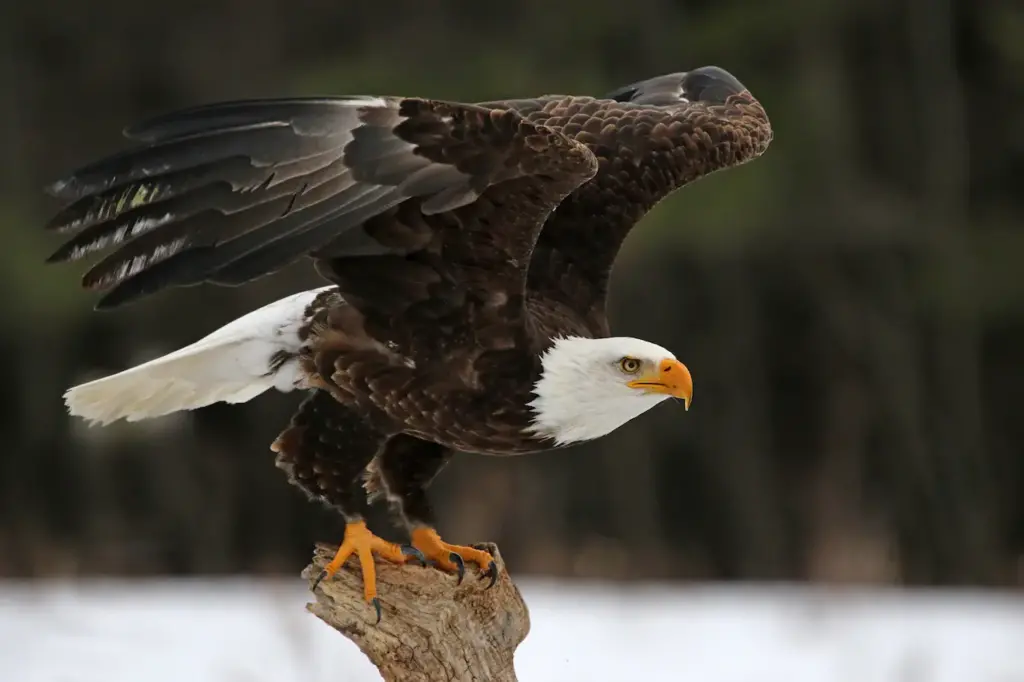
Bald Eagle Pair Facing Each Other
2. Hawks
Hawks are said to be the crows’ deadliest adversaries since they aggressively hunt crows and their young ones. Hawks seek and fight other birds using their normally well-formed limbs. Like other raptors, they have three frontal and one long posterior talon on each limb.
Did you know that hawks may kill various birds using different techniques? Because of this particular habit, hawks are among the most hazardous avian predators.
Because crows follow a diurnal pattern, hawks often attack them daily. When hawks attack crows, they frequently target the young, feeble baby crows because they are more easily intimidated and helpless.
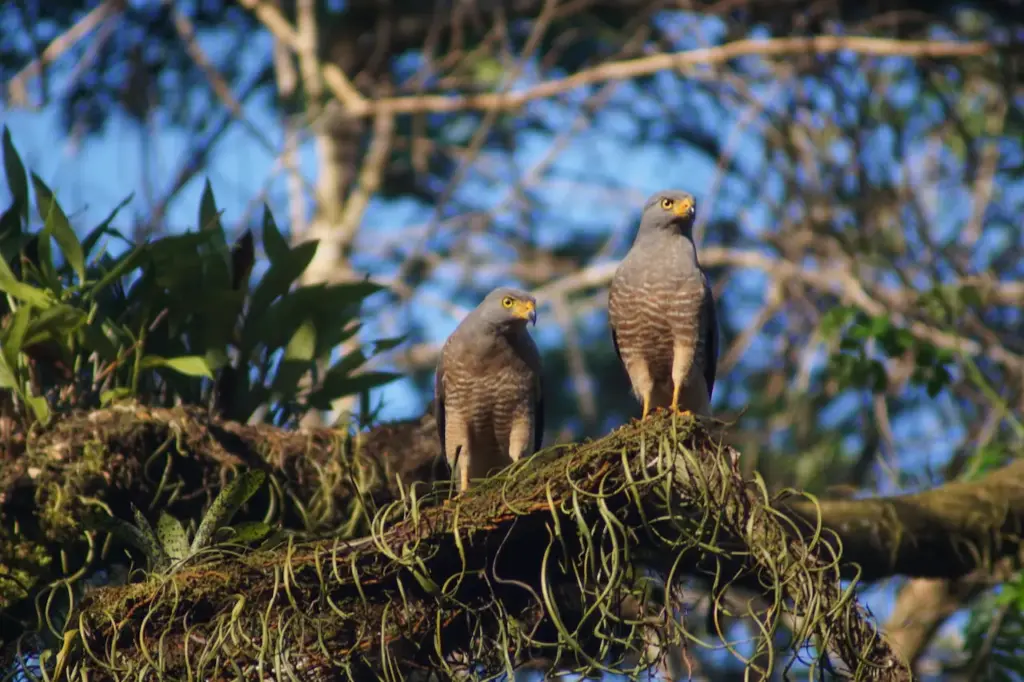
What Eats Hawks What Do Hawks Eat
3. Raccoons
Like hawks and eagles, falcons are a dangerous species of raptors that frequently feed on crows. Typically, falcons use an adventurous approach by pursuing and hunting crows. Crows are a common sight in metropolitan areas, where falcons often live. Therefore, these birds of prey provide an ideal feast for the raptors.
Since they acclimated to living in cities, falcons’ primary food source has been pigeons and crows. These astute raptors have also constructed nests atop large structures to provide a haven for themselves, their young, and food. So, falcons are the most intellectual birds and the apex predators.
The fact that falcons can hunt other animals using seven different techniques is equally impressive. They can capture and kill crows thanks to the unique structure of their nails. However, the crows also make a forceful defensive claim.
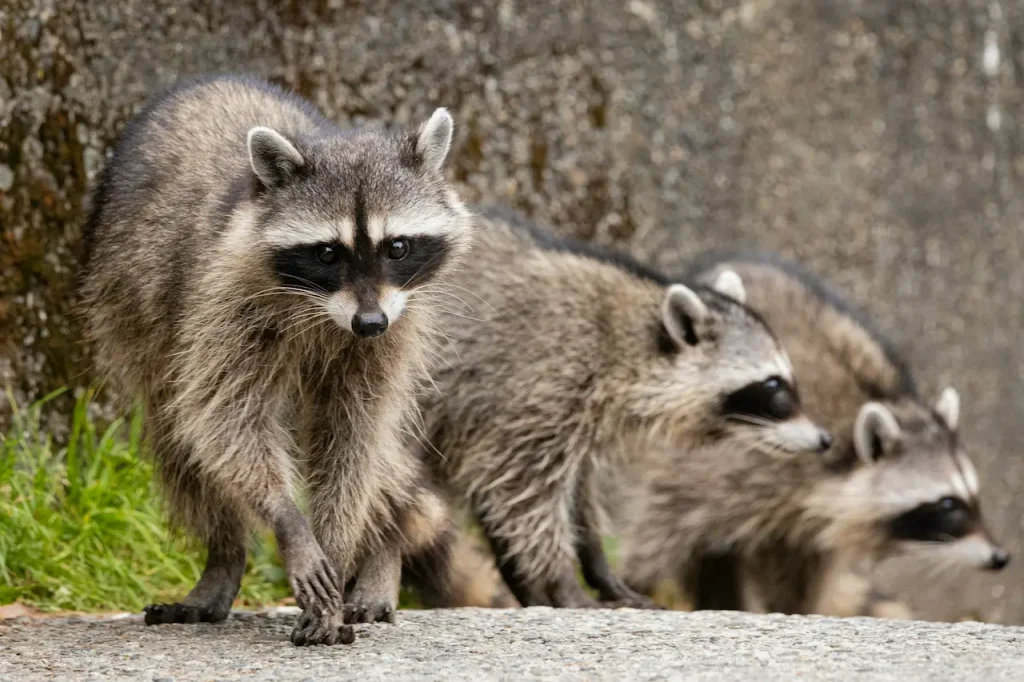
Three Raccoons What Eats Raccoons
4. Owls
Do you enjoy seeing videos of birds on the internet? If so, you may have seen the widely shared films of owls consuming crows’ brains. Indeed, owls enjoy consuming crow brains. However, how are crows killed? Let’s learn about that.
Even more dangerous than eagles and hawks are horned owls to large flocks of crows. Crows are frequently ambushed by owls from the bushes behind their backs. The owls conceal behind the bushes in preparation for their prey. Because owls are nocturnal birds, they find it simpler to identify crows sleeping on a roost, and when they encounter no resistance, they attack the crows.
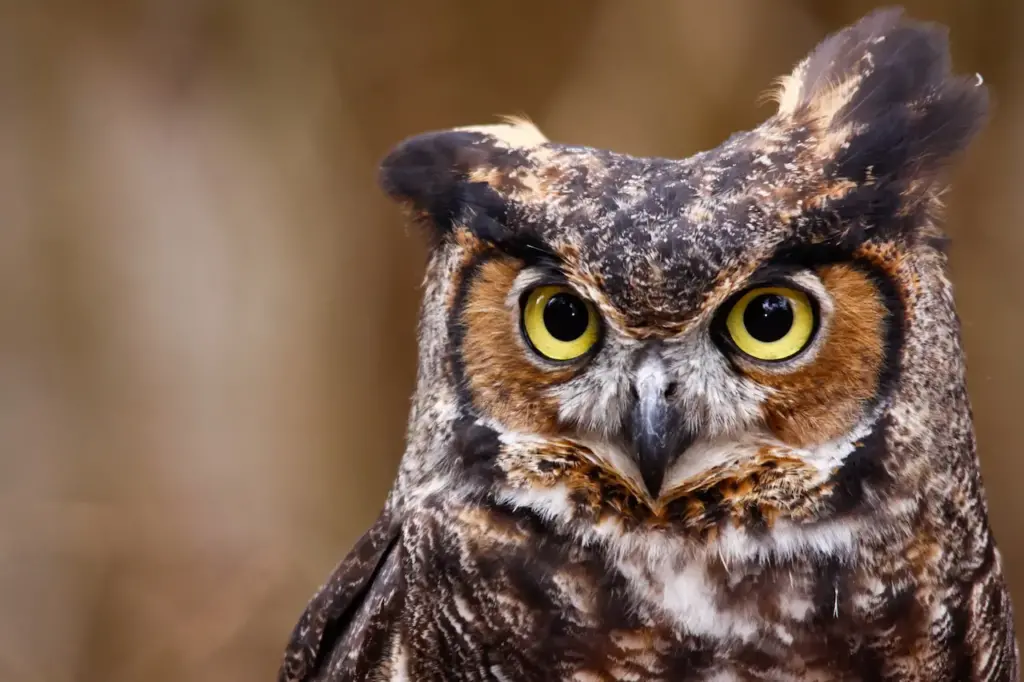
Closeup Image of Owl
5. Snakes
There are many different types and sizes of snakes worldwide, some aquatic and others terrestrial. Both terrestrial and arboreal snake species can pose a hazard to crow populations, as they can attack crows from the trees.
Snakes that live on trees typically have a disguised body as a natural protection. Because of this, it is challenging for birds like crows to identify them. The snake is ready to strike as soon as it sees its victim. Although they hunt slowly, snakes frequently succeed in taking down their prey because of their cunning tactics.
Certain snakes have worm-like tails that draw crows and other birds to them as food sources. They seize this chance, killing the birds that come in contact with their tail. Furthermore, it is nearly complicated to withstand a snake assault.
Snakes restrict themselves after gradually entangling the prey they chase between their bodies. The bird in their grasp gradually loses breath, eventually dying. The snake releases its hold on the bird once it has died and consumes it. This may sound cruel to many of you, but this is simply how the natural food chain functions.
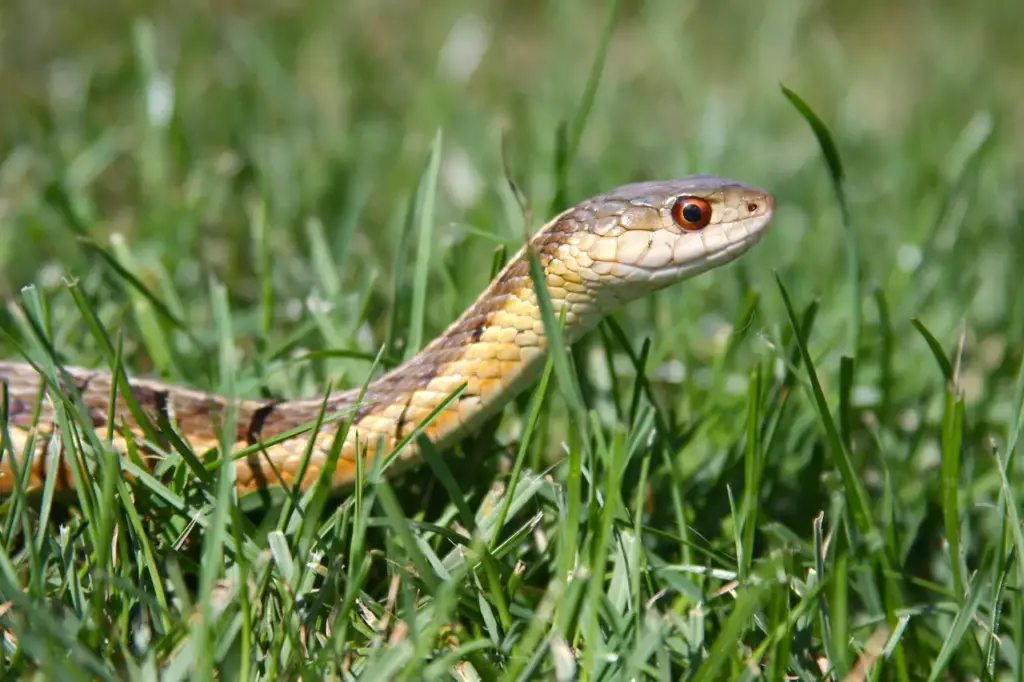
Closeup Inage of Snake On The Grass
6. Kingbirds
First, let’s clarify that kingbirds are not devoted crow predators. You may be surprised why this section is devoted to our study of these birds. That’s because the kingbirds pursue crows for purposes other than food.
Kingbirds are naturally sedentary birds; they do not always hunt or eat. They mainly eat anything they can find in their environment, including fruits, seeds, and insects. However, kingbirds are fierce defenders of their young and territory.
If a crow or a crow roost gets into a kingbird’s living or breeding region, they can be readily mobbed. But in response to danger, this is just a defensive move on their side. Therefore, kingbirds are crows’ natural predators unless the crows pose a threat.
7. Red-Winged Blackbirds
Has a Red-winged Blackbird caught your eye? If so, you must need some clarification to see that they are members of the same family as the crows. But we’ll talk about how Red-winged Blackbirds aren’t like crows in this part and how they can pose a hazard.
Red-winged Blackbirds only crowd crows when in danger, much like Kingbirds do. The crows’ eyeing of their food supplies, invading of their territory, or threat to their young, eggs, and nestlings might all be reasons for this sense of fear. Red-winged Blackbirds may even harm or kill the crows to defend their young ones.
Final Words
Crows are essential in ecosystem development and function because they are scavengers, grazers, and seed dispersers in the complex web of life. Still, like any other creature, they are under constant threat. As a predator species, they will eat them.
Knowing the crow’s predators helps us better understand ecosystem dynamics and the delicate balance that keeps life on Earth viable as we work to untangle the web of links that make up nature.

